Networking isn’t what it used to be. The days of collecting business cards at events and making cold calls are fading. Technology, social media, and shifting workplace dynamics have transformed how we connect, build relationships, and create opportunities. But one thing remains the same: success still comes from leveraging smarter minds.
Here’s how networking has evolved—and how you can adapt to stay ahead.
1. From Traditional to Digital First
Then: Networking was primarily in-person—conferences, coffee meetings, and industry events.
Now: Platforms like LinkedIn, Twitter, and even TikTok allow professionals to connect instantly, breaking geographic barriers. Digital-first networking means you can build relationships without ever leaving your home office.
How to Adapt: Use LinkedIn strategically. Engage with industry posts, share valuable content, and connect with professionals who align with your goals. Your network is no longer limited to those you meet in person—take advantage of that.
2. From Random to Intentional
Then: The goal was to meet as many people as possible, often without a clear purpose.
Now: Quality trumps quantity. Smart networking is about targeted connections—building relationships with people who can provide mutual value.
How to Adapt: Focus on creating your Personal Board of Directors—a group of mentors, advisors, and peers who help guide your career and business decisions. Instead of aimless networking, be strategic about who you reach out to and why.
3. From One-Way to Value-Driven Connections
Then: Networking was transactional—”What can you do for me?”
Now: Relationships are built on authenticity and mutual benefit. People are more likely to engage when they see value in the connection.
How to Adapt: Offer insights, share industry knowledge, or connect people in your network before expecting anything in return. Position yourself as a resource, and opportunities will follow.
4. From Job Hunting to Personal Branding
Then: Networking was about finding jobs or clients.
Now: It’s about building a brand—showcasing expertise, sharing content, and becoming a recognized authority in your field.
How to Adapt: Adopt the mindset that every day is an interview. Your online presence should demonstrate your expertise, whether through articles, videos, or posts. The more you share, the more you attract the right people and opportunities.
5. From Passive to Data-Driven Networking
Then: Networking relied on gut feeling and chance encounters.
Now: AI, social media algorithms, and analytics help professionals identify the right people to connect with.
How to Adapt: Use LinkedIn’s search and recommendation features to find valuable contacts. Tools like customer relationship management (CRM) systems can help track and nurture professional relationships more effectively.
Bottom Line
The way we network has changed, but the need to connect with smarter minds remains timeless. The key is knowing where and how to build those relationships effectively in today’s digital-first world. Be strategic, add value, and use the tools at your disposal to create meaningful connections that drive success.
Ready to expand your network the smart way? Let’s connect!



































